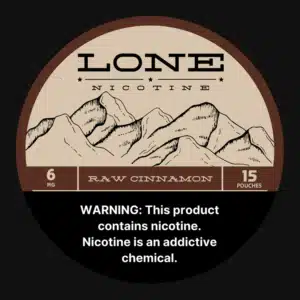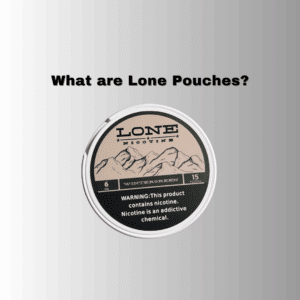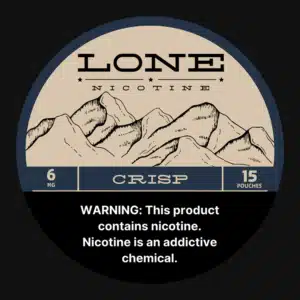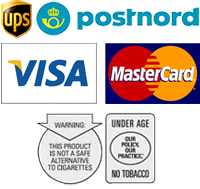What Are Lone Nicotine Pouches
Introduction
Smoke‑free nicotine products are experiencing rapid growth. A 2025 market report citing Statista projections estimates that reduced‑risk products—vapes and nicotine pouches—will generate about US$9 billion in U.S. revenue in 2025. Lone Nicotine Pouches are part of this trend. Marketed as “the clean pouch,” they provide synthetic nicotine in a tobacco‑free format. This article explains what Lone pouches are, how they differ from snus and popular brands like ZYN, and what adult users should know.
What Are Lone Nicotine Pouches?
Lone Nicotine Pouches are a U.S.-based brand of oral nicotine pouches marketed as “the clean pouch.” Unlike traditional snus, they contain no tobacco leaf. Instead, they use synthetic nicotine combined with a short ingredient list that includes xylitol for sweetness, cellulose for structure, sodium alginate (a seaweed extract) as a binder, and essential oils for flavor. This minimal approach is what sets Lone apart: the brand promotes transparency and avoids common additives like artificial sweeteners or plastic binders. Available in flavors such as Crisp, Raw Cinnamon, and Wintergreen, Lone targets adult users who prefer a simpler alternative to mainstream pouch brands.
Pouches vs. snus
A nicotine pouch is a small fiber sack containing nicotine, water, sweeteners, and flavorings. Users tuck it between the gum and lip and absorb nicotine through the mouth lining. Unlike snus, a moist tobacco product, the pouch has no tobacco leaf. Snus delivers nicotine plus tobacco-derived carcinogens, increasing risks of mouth cancer and gum disease. Nicotine pouches avoid these toxins but still deliver addictive nicotine, which can cause gum irritation, hiccups, or nausea. They are also not FDA-approved cessation tools.
The category’s major brand, ZYN, offers many strengths and flavors and uses tobacco-derived nicotine salts. Its popularity has even led to occasional shortages. Lone, in contrast, focuses on simplicity and ingredient transparency.
Read our guide: Snus VS ZYN
Ingredients and flavors
Lone uses a short, carefully chosen list of ingredients. Xylitol sweetens the pouch while supporting oral health. Microcrystalline cellulose provides structure and is inert. A binder made from sodium alginate, a seaweed extract, replaces plastic polymers, while sodium bicarbonate gently raises pH to enhance absorption. Purified water controls moisture, and flavors come from essential oils. The nicotine is synthetic and free of tobacco-derived heavy metals. Lone avoids artificial sweeteners and harsh pH agents.
The brand sells three flavors—Crisp, Raw Cinnamon, and Wintergreen—in 3 mg or 6 mg strengths. Each can contains 15 pouches, and a pack of five cans (75 pouches) costs about US$27.50. The pouches are small and dry, similar to ZYN minis. Lone limits its lineup to keep quality and consistency high.
Each flavor has a distinct profile. Crisp (Minty Cool) delivers a menthol note with herbal undertones. Raw Cinnamon balances warmth and sweetness without being cloying. Wintergreen offers a cool mint with tangy notes. While the range is narrow, Lone emphasizes perfecting its formulas. Fans of bold flavors like ZYN Black Cherry may find it limited, but others may appreciate its restrained, natural approach.
Read our guide: Black Cherry ZYN – What Is The Hype
How to use
To use a Lone pouch, place one under your upper lip and leave it there until the flavor fades—about 30 minutes. Beginners should start with the 3 mg strength. Do not chew or swallow the pouch. Space out usage, as overuse can cause nausea or tingling. Common side effects include gum irritation and nicotine dependence. Some reviewers suggest that around ten pouches per day should be the upper limit. Lone pouches are for adults over 21; pregnant individuals and those with heart conditions should avoid them. Sleeping with a pouch in place can also irritate gums.
Comparison and considerations
ZYN remains the most recognized nicotine pouch brand in the U.S., with a wide variety of strengths and ZYN flavors. VELO, owned by BAT, has built strong global reach with slim-format pouches designed for smoother release. XPCT has gained attention for its higher strength levels and bold flavor blends, while XQS stands out for its experimental flavor options like blueberry or tropical mixes.
Lone positions itself differently: it limits its range to just a few flavors and highlights its use of synthetic nicotine and simplified ingredients. Unlike mass-market brands, Lone emphasizes a “clean” identity, though this comes at the cost of variety. For consumers, this shows how diverse the nicotine pouch landscape has become — from minimalistic boutique-style brands like Lone to established players like ZYN and VELO.
All pouches share one important fact: while they avoid tobacco leaf, they still deliver nicotine, which is addictive and can lead to gum irritation, nausea, or dependence. They are not medically approved cessation aids.
Read our guide: VELO VS ZYN
Final thoughts
Lone Nicotine Pouches illustrate one approach within the growing smoke-free nicotine market — focusing on fewer ingredients and synthetic nicotine. Compared to broader brands like ZYN, VELO, XPCT, and XQS, Lone reflects a more niche philosophy rather than mass appeal.
The takeaway is that nicotine pouches, regardless of brand, remain addictive. They may serve as an alternative to smoking or snus, but they are not risk-free or cessation tools. Adults who choose to use them should do so with awareness of both the differences between brands and the potential health implications.





